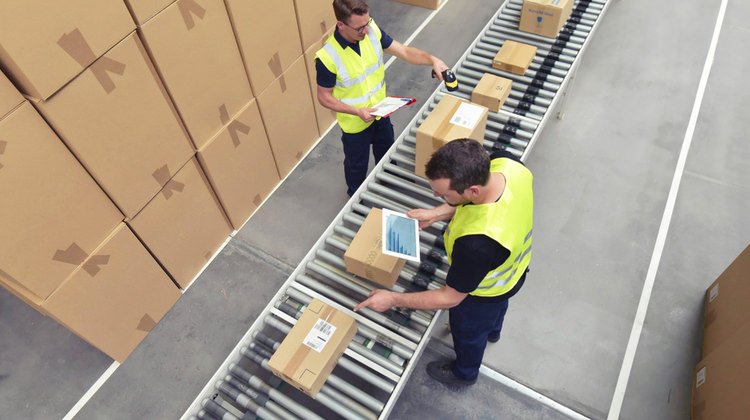
In the pharmaceutical industry, reverse logistics refers to the process of managing the return, reuse, or disposal of pharmaceutical products and materials. Optimizing reverse logistics is crucial for pharmaceutical companies to enhance efficiency, reduce costs, and promote sustainability. In this article, we will delve into the intricacies of pharmaceutical reverse logistics, discuss the challenges involved, and explore strategies for optimizing the reverse logistics process to achieve maximum efficiency.
Understanding the Challenges in Pharmaceutical Reverse Logistics:
Pharmaceutical reverse logistics presents unique challenges due to the nature of the products involved and regulatory requirements. Some of the key challenges include:
Product Integrity and Safety:
- Ensuring the integrity and safety of returned pharmaceutical products is paramount. Product quality must be carefully assessed to prevent the distribution of compromised or expired medications.
Regulatory Compliance:
- The pharmaceutical industry is subject to strict regulations and guidelines governing the handling, storage, and disposal of pharmaceutical products. Compliance with these regulations is essential to mitigate legal and environmental risks.
Product Serialization and Traceability for Optimizing Pharmaceutical Reverse Logistics
- Tracking and tracing pharmaceutical products throughout the reverse logistics process is critical for maintaining product authenticity, preventing counterfeiting, and ensuring patient safety.
- Lack of Planning: Often, reverse logistics processes are not adequately planned in advance, leading to inefficiencies and costly consequences.
- Risk Management: Effective risk management is lacking, resulting in delays and potential data inaccuracies.
- Harmonization Issues: Gaps and lack of harmonization between Good Clinical Practice (GCP), Good Manufacturing Practice (GMP), local environmental laws, and import/export regulations further complicate the process.
Strategies for Optimizing Pharmaceutical Reverse Logistics:
The ISPE Good Practice Guide:
Investigational Medicinal Products Reverse Logistics – Good Returns and Reconciliation Practices Guide:
- The first-of-its-kind guide provides insights into various considerations for successful reverse logistics planning within pharmaceutical organizations.
- It outlines factors such as regulations, product characteristics, and the use of technology in developing returns and reconciliation policies and procedures.
Efficient Returns Management:
- Implementing robust returns management systems, processes, and Simplify Customer Returns as they can streamline the handling of returned pharmaceutical products. This includes establishing clear guidelines for accepting, inspecting, and categorizing returned items.
Effective Product Disposition:
- Establishing clear protocols for determining the disposition of returned products is crucial. This involves assessing the condition and quality of the returned items to determine if they can be resold, repurposed, or if they require proper disposal. Evaluate Returned Items Promptly and assess returned products swiftly for resale or proper disposal.
Enhanced Product Serialization and Tracking:
- Implementing advanced serialization and tracking technologies can improve visibility and traceability throughout the reverse logistics process. Utilize tracking systems like RFID tags and barcodes for real-time monitoring. This helps identify potential issues, prevent counterfeiting, and ensure regulatory compliance.
Collaboration and Partnerships:
- Collaborating with third-party logistics providers, recycling companies, and other stakeholders can help optimize reverse logistics processes. This includes leveraging their expertise, resources, and infrastructure to streamline operations
Data Analytics and Automation:
- Utilizing data analytics and automation tools can provide valuable insights into reverse logistics operations. This helps identify inefficiencies, improve decision-making, and optimize resource allocation.
- Identify Reasons for Returns: Understand why products are being returned and take corrective actions.
- Stay Updated on Recall Regulations: Keep abreast of recall regulations set by organizations like CDSCO (Central Drugs Standard Control Organization) while ensuring timely documentation and disclosure.
The Benefits of Optimized Pharmaceutical Reverse Logistics:
Cost Reduction:
- Efficient reverse logistics processes can help reduce costs associated with product returns, disposal, and inventory management.
Improved Sustainability:
- By optimizing reverse logistics, pharmaceutical companies can minimize waste, promote recycling and reusing, and reduce their environmental impact.
Enhanced Customer Satisfaction:
- Streamlined reverse logistics processes lead to faster and more accurate returns handling, improving customer satisfaction and loyalty.
Remember, efficient reverse logistics not only saves time and money but also contributes to accurate clinical study data and overall industry effectiveness.
Conclusion:
Optimizing pharmaceutical reverse logistics is vital for improving efficiency, reducing costs, and promoting sustainability in the pharmaceutical industry. Overcoming the challenges associated with reverse logistics through efficient returns management, effective product disposition, enhanced serialization, and tracking, collaboration, and data analytics can have significant benefits for pharmaceutical companies. By prioritizing and investing in optimized reverse logistics processes, the industry can achieve greater operational efficiency, regulatory compliance, and customer satisfaction while contributing to a more sustainable future.
Key takeaways for optimizing pharmaceutical reverse logistics
- Optimizing pharmaceutical reverse logistics is crucial for improving efficiency in the supply chain.
- Streamlining processes and reducing waste can lead to cost savings and improved customer satisfaction.
- Implementing advanced tracking and monitoring systems can enhance visibility and traceability of pharmaceutical products.
- Collaboration and communication among stakeholders are essential for efficient reverse logistics operations.
- Implementing a robust returns management process can help identify and address product quality issues promptly.
- Utilizing data analytics and predictive modeling can optimize inventory management and minimize stockouts or overstock situations.
- Emphasizing proper handling, storage, and disposal of pharmaceutical products can mitigate risks and ensure compliance with regulations.
- Continuous improvement and regular evaluation of reverse logistics processes are necessary to adapt to changing market dynamics.
- Investing in technology and automation can optimize efficiency, accuracy, and speed in reverse logistics operations.
- Developing sustainable practices, such as recycling and repurposing, can contribute to environmental goals while optimizing efficiency in reverse logistics.
Hope this information was helpful and for more check out our previous blog posts by clicking here:


